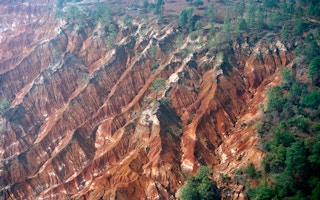Rising temperatures could release massive amounts of carbon trapped in the Earth’s soil, the United Nations agricultural agency today reported, warning that soil management could make or break climate change response efforts.
Plants and organic residues take in carbon and then sequester it into soil, creating a vast reservoir of carbon. But when soil is disturbed or degraded, trapped carbon and other greenhouse gases resulting from decay are re-released back into the atmosphere, the UN Food and Agricultural Organization (FAO) explained in a press release.
“
Soils with high organic carbon content are likely to be more fertile and productive, better able to purify water, and help to increase the resilience of livelihoods to the impacts of climate change.
Jose Graziano da Silva, director-general, FAO
“This means that the Earth’s soil carbon reservoir could either release massive amounts of greenhouse gases into the atmosphere, or sequester more of them, depending on the management decisions we make going forward,” according to the report, Soil Organic Carbon: The Hidden Potential.
The report was presented on 21 March at the start of the Global Symposium on Soil Organic Carbon, in Rome.
Speaking at the event, the FAO Director-General Jose Graziano da Silva said that beyond its role as carbon sinks, healthy soils are the foundation for global food security.
“Soils with high organic carbon content are likely to be more fertile and productive, better able to purify water, and help to increase the resilience of livelihoods to the impacts of climate change,” Mr. da Silva said.
Improving the health of the planet’s soils and boosting their organic carbon content is critical to achieving several of the international development goals established by the Sustainable Development Goals, including those related to eradicating hunger and malnutrition, he added.










